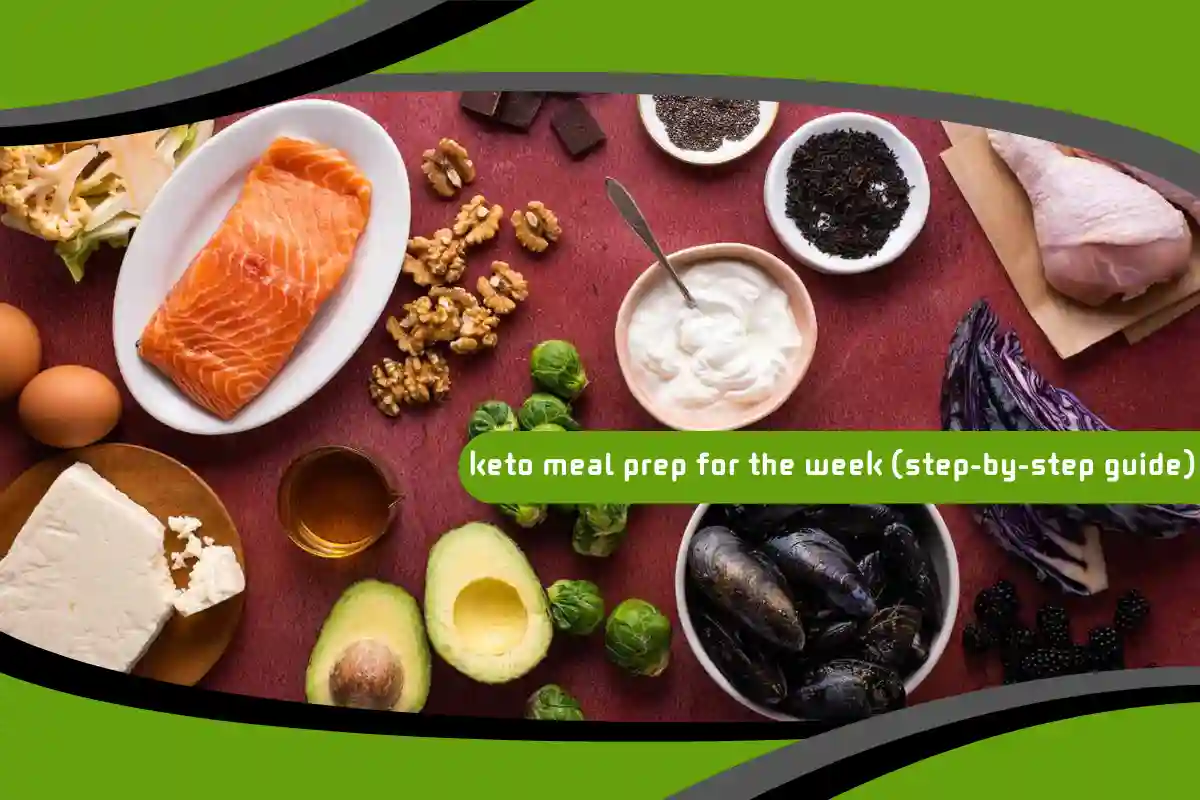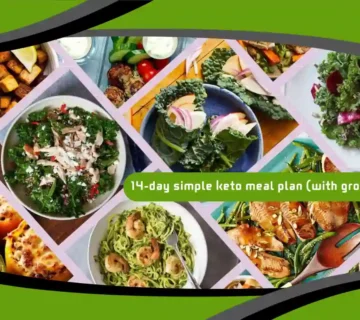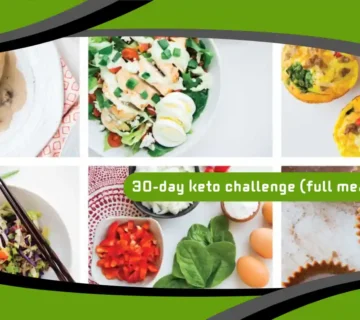Adopting a ketogenic lifestyle can be a powerful tool for fat loss, sustained energy, and improved mental clarity. But like any nutritional strategy, its success often depends on preparation. Without the right planning, convenience foods and carb-heavy temptations can easily derail your progress. That’s where keto meal prep comes in. Whether you’re a busy professional, a student, or a parent juggling responsibilities, having your meals prepped in advance ensures consistency, reduces stress, and saves time. In this comprehensive guide, we’ll explore every step of keto meal prep so you can stay on track with your health goals all week long.

Understanding the Keto Diet Foundation
Before diving into meal prep, it’s important to fully understand the keto framework. A ketogenic diet is high in healthy fats, moderate in protein, and extremely low in carbohydrates. This macronutrient ratio shifts the body into a metabolic state called ketosis, where fat becomes the primary fuel source. This process requires strict carbohydrate control—typically under 50 grams per day. To stay in ketosis, your meals must avoid grains, sugars, starchy vegetables, and most fruits, focusing instead on nutrient-dense, low-carb whole foods.
Benefits of Weekly Keto Meal Prep
The benefits of weekly meal prep are amplified when following a keto lifestyle. By dedicating a few hours to plan, cook, and portion your meals, you create a structure that reduces the temptation to grab non-keto options. Meal prep helps prevent decision fatigue, promotes portion control, and allows you to track your macros more easily. It also simplifies grocery shopping and limits food waste. Most importantly, it provides peace of mind, knowing that every meal you reach for is aligned with your health and fitness goals.
Setting Clear Nutritional Goals
Start by defining your individual keto goals. Are you aiming for weight loss, improved energy, or better metabolic health? Based on your objective, your macronutrient ratios may vary slightly. Use a reliable keto calculator to determine your daily intake for fat, protein, and carbs. These numbers will serve as your guide throughout the week. Remember, consistency is more important than perfection. Setting clear goals ensures that your meal prep supports your unique needs and lifestyle.
Choosing the Right Meal Prep Containers
Investing in high-quality meal prep containers is essential. Glass containers are durable, microwave-safe, and don’t absorb odors or stains. BPA-free plastic options are lighter and convenient for on-the-go meals. Consider using containers with compartments to separate proteins, fats, and veggies. Mason jars are excellent for layered salads and dressings. Having a consistent container system streamlines storage, fridge organization, and meal transportation.
Planning a Balanced Keto Menu
A well-planned keto menu includes a balance of proteins, healthy fats, and low-carb vegetables. Start by choosing your primary protein sources such as chicken, beef, salmon, or eggs. Add healthy fats like olive oil, avocado, nuts, and cheese. Include fibrous vegetables like spinach, zucchini, broccoli, and cauliflower. Aim for variety to prevent flavor fatigue and ensure you’re getting a wide range of nutrients. Planning your menu ahead of time makes shopping and prepping far more efficient.
Creating a Keto Grocery List
Based on your weekly menu, create a grocery list organized by food category. This minimizes your time in-store and helps you avoid impulse purchases. Stick to the perimeter of the store where fresh produce, meats, and dairy are typically located. Avoid aisles filled with processed snacks and baked goods. Shopping with a keto-specific list ensures you only bring home foods that support your goals and streamline your prep process.
Scheduling Your Prep Day
Pick one or two days each week dedicated solely to prep. Sundays and Wednesdays are popular choices. Set aside 2–3 hours depending on how many meals you’re preparing. Make this time productive and enjoyable—put on music or a podcast and focus on your goals. Treat it like a self-care routine that sets the tone for a successful week. Consistent scheduling creates a sustainable habit that simplifies your keto lifestyle.
Batch Cooking Proteins
Start your prep by batch cooking your protein sources. Grill or bake chicken breasts, roast beef, cook bacon, and hard-boil eggs. Use slow cookers or pressure cookers for bulk cooking meats like pulled pork or shredded beef. Proteins can be seasoned differently and reused in multiple dishes—grilled chicken can be used in salads, wraps, or paired with cauliflower rice. Properly storing your proteins ensures freshness and flexibility throughout the week.
Watch also: Ramadan Keto Plan: Suhoor and Iftar Ideas to Stay in Ketosis While Fasting
Preparing Keto-Friendly Vegetable
Vegetables are essential in keto for fiber and micronutrients. Roast a large batch of low-carb veggies such as Brussels sprouts, cauliflower, zucchini, and bell peppers. Steam leafy greens like spinach or kale for quick sautés during the week. Store them in airtight containers and reheat as needed. Use a spiralizer to prep zucchini noodles in advance or rice cauliflower to use as a rice substitute in various dishes.
Making Keto Sauces and Dressings
Flavor is key to staying consistent on keto, and sauces make all the difference. Prepare your own low-carb sauces like creamy garlic aioli, avocado mayo, sugar-free barbecue sauce, and ranch dressing. Homemade dressings are often healthier and keto-compliant compared to store-bought versions. Store them in small jars or squeeze bottles for quick access during the week. Sauces can transform a simple meal into a satisfying and flavorful dish.
Assembling Grab-and-Go Meals
Convenience is a major advantage of meal prep. Assemble grab-and-go meals in individual containers, complete with proteins, vegetables, and fats. Think keto cobb salads, egg muffins, chicken with avocado and broccoli, or beef bowls with cauliflower rice. These meals are perfect for work lunches, travel days, or post-workout nutrition. Having them ready reduces reliance on takeout or vending machine snacks, keeping you on track effortlessly.
Incorporating Keto Snacks
While not always necessary, having keto snacks on hand can curb cravings and prevent overindulgence. Prep snacks like boiled eggs, cheese sticks, nut butter packets, or keto fat bombs. Portion them into small containers or bags so they’re easy to grab. Keeping your snack options ready helps you maintain ketosis without reaching for sugary or high-carb alternatives.
Storing and Labeling Meals
To keep things organized, label each container with the meal type and date. Use dry-erase labels or masking tape to make changes easy. Store meals with shorter shelf lives at the front of the fridge to use them first. Freeze portions you won’t eat within 3–4 days. Proper labeling and rotation help prevent spoilage and ensure every meal stays fresh and safe to eat.
Watch also: Lazy Keto Meal Plan: Effortless Low-Carb Eating for People Who Hate Cooking
Optimizing Your Fridge and Freezer Space
Efficient storage makes your keto meal prep smoother. Group meals by type—breakfast, lunch, dinner—for easy access. Use bins or baskets to organize snacks, sauces, and frozen items. Invest in stackable containers to save space and keep your fridge neat. This system helps you locate meals quickly and avoids the stress of midweek clutter and confusion.
Tracking Macros and Portion Sizes
Use digital kitchen scales to portion meals according to your specific macro needs. Tracking apps like MyFitnessPal or Carb Manager can help you log your meals and stay within your daily targets. Overeating even keto-friendly foods can hinder progress, especially with calorie-dense fats. Accurate portioning and tracking ensure you’re getting the right nutrients in the right amounts.
Keeping Meals Interesting with Variety
Even within the keto framework, food variety is essential to avoid burnout. Change your protein or seasoning each week. Alternate between Mediterranean, Mexican, or Asian keto flavors. Add new vegetables or create themed bowls. Variety keeps your meals exciting and ensures you’re getting a broader range of nutrients. Experimentation is the key to long-term adherence.
Managing Keto Cravings Strategically
Cravings are natural, especially when transitioning to keto. Combat them with well-planned meals that are high in flavor and satiety. Include ingredients rich in electrolytes and healthy fats. Satisfy sweet cravings with keto-friendly desserts like chia pudding or almond flour brownies. Prepping these items ahead of time helps you avoid derailing your progress during weak moments.
Meal Prep for Keto on a Budget
Keto doesn’t have to be expensive. Buy meats in bulk, use seasonal vegetables, and shop at discount stores or local markets. Frozen vegetables are a cost-effective and nutrient-rich alternative. Reuse ingredients across multiple meals to minimize waste. With smart planning, you can stick to a keto diet without overspending.
Staying Consistent and Adjusting Over Time
Your keto meal prep routine should evolve with your goals and lifestyle. Track your energy levels, hunger cues, and progress. Adjust portion sizes, food types, or prep frequency as needed. Staying flexible allows you to make keto sustainable over the long term. What works for you today may change in the future, and that’s okay.
Final Thoughts on Weekly Keto Meal Prep
Keto meal prep is more than a productivity hack—it’s a foundational habit for success on a low-carb, high-fat diet. It eliminates guesswork, reduces decision fatigue, and empowers you to stick to your goals even on the busiest days. By planning ahead, preparing nutritious meals, and staying organized, you’re not just following a diet—you’re building a lifestyle rooted in intention, health, and vitality.
Watch also: Rapid Results: A Quick Keto Plan for Last-Minute Weight Loss That Actually Works



No comment